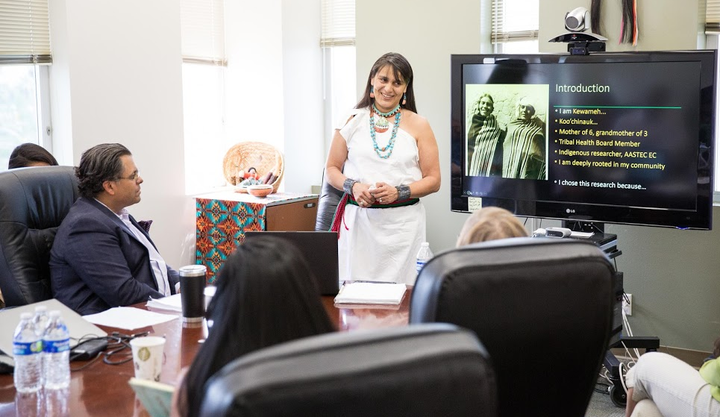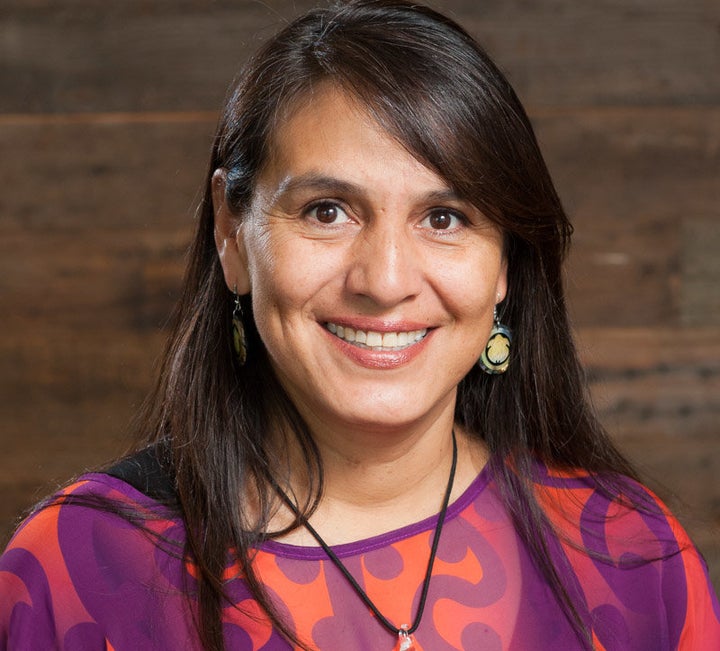
Native American communities experience a much higher rate of mental health issues, such as substance abuse and suicide, than any other racial or ethnic group in the country ― and the media tend to fixate on these grim figures.
Data shows that tribal communities experience psychological distress 1.5 times more often than the general population, and Native Americans use and abuse alcohol and drugs at younger ages and at higher rates than any other ethnic group. Plus, suicide is the second-leading cause of death among 10- to 34-year-olds in tribal communities.
But Doreen Bird, Ph.D., an expert on mental health issues in tribal communities, says numbers like these tell only part of the story.
Bird, who hails from the Kewa Pueblo of New Mexico, has devoted her career to researching mental and behavioral health among Native American communities. She notes that suicide rates can vary widely from tribe to tribe, and cautions against treating all Native peoples as a monolith.
“You can get a very different picture among different tribal nations,” Bird told HuffPost.
Because of the stigma surrounding suicide, the reported numbers can also sometimes be off. In tribal communities, there’s a reluctance to speak about those who have died by suicide, as well as mistrust of outside researchers who examine issues related to suicide but aren’t from within the tribal communities, she added. It can also be taboo to talk about those who have died, Bird explained.
Bird, a 48-year-old mom of six and grandmother of three, wants to change the way tribal communities’ stories are told and hopes to change the conversation around some of the toughest challenges facing many Native populations around the country.
She says alcohol abuse in her own family motivated her to explore these issues from a public health perspective, which means balancing her tribal background with her academic training. From 2016 to 2018, Bird served as a Senior Tribal Prevention Specialist at the Suicide Prevention Resource Center, where she worked with 16 tribes across the United States to address suicide prevention. Recently, she obtained her doctorate in justice studies at the Arizona State University School of Social Transformation.
HuffPost spoke with Bird to learn more about her work, and what she wishes others knew about mental health within Native American communities.

What’s the biggest misconception about suicide in tribal communities?
A lot of times, the media and journal articles highlight high rates of suicide. But even in my own state of New Mexico, there were different varying rates. One study found that the more acculturated tribes had higher suicide rates than the more traditional, less acculturated tribes. [Acculturated means tribes that are more accustomed to the Western way of life — having jobs, paying bills, etc.]
But the tribe that I come from [Kewa Pueblo] had zero suicides. Some tribal nations have very low suicides, while others have very high suicide rates. So when you really look into tribal-specific numbers, you can get a very different picture amongst different tribal nations.
What’s important for researchers to keep in mind when it comes to tribal suicide prevention?
There are many cultural considerations that may be unique to each tribe. Some tribal communities consider it taboo to talk about death while others are OK to talk about death and the deceased. It’s also important to listen to the elders and youth because they have lived experience in their communities. As outsiders trying to make an impact, it behooves us to look at strengths and resilience that lie within each community.
Tell me how health and well-being is viewed within Native communities.
With that, I can put my tribal lens back on because that’s different in academia. In academia and the scientific journal literature, Natives have the highest rate of diabetes, PTSD, suicide. There are statistics, which a lot of times are also underrepresented.
But when I look from my personal tribal perspective, the way it’s viewed is that life is really hard, and we have our customs and ways of living to sustain our culture and our tribal communities. We have a lot of strength there, and for mental health we have a lot of cultural knowledge and resources to help cope with the stress of life.
What are some of those coping mechanisms?
For me, prayer and spirituality is huge. I remember seeing my grandmothers pray every night, every day. I think that my prayers have actually manifested my Ph.D. for me because I want to help my community so badly. For me, it was trying to understand families who were afflicted by alcohol problems. I actually was praying about it, and I ended up studying psychology and public health.
Another thing we have is an extended family network, which is so helpful in coping with life. For example, when I moved home, I moved home with my mom, my brothers, my children, and then all the neighbors in my tribal community around me. That’s a huge connection of family and friends that are there to support one another. Even for me to finish school, I couldn’t have done it without my brothers staying home to watch my kids while I was out going to class or working. Extended family is huge for us.
What are some impacts you’ve witnessed of suicide prevention efforts?
I’ve seen a lot of positive effects in schools. One example is the American Indian Life Skills (AILS) program, which is a school-based life skills training program that aims to reduce high rates of adolescent suicidal behaviors in Native American communities. It incorporates traditional Native American culture healers into the curriculum, while teaching students about coping skills, signs of suicidal thinking, and how to help one another. In one tribe where this program was implemented, the suicide rate went down to zero.
What challenges have you faced as a Native American researcher in Native communities?
Data is known as the “D-word” among some Native Americans. In my own community, I was asked to talk about suicide prevention. When I said the word “data,” there was pushback. I had a tribal leader telling me, “You’re never going to get that data, because we don’t count how many of our children we’ve lost.”
I totally have to respect that as a tribal member, that worldview. But as an epidemiologist, when we’re trying to create interventions with guidance from data, that was just a very interesting clash of values.
As a Native American academic, I have to deal with balancing our tribal community’s world and respecting that, as well as academia and science. And also just trying to see how to respectfully engage the two into the work that we do.
What advice would you give a young Native American struggling with their mental health?
I would say reach out to somebody, cause there’s always somebody who cares about us. Sometimes we feel so alone or we isolate ourselves, but there’s always someone there that really cares about us.
It really can save lives just by showing that you care. I like to tell people we can all be healers. You don’t have to be a doctor or a medicine person. We can help heal each other by being kind or smiling at somebody.
If you or someone you know needs help, call 1-800-273-8255 for the National Suicide Prevention Lifeline. You can also text HOME to 741-741 for free, 24-hour support from the Crisis Text Line. Outside of the U.S., please visit the International Association for Suicide Prevention for a database of resources.
